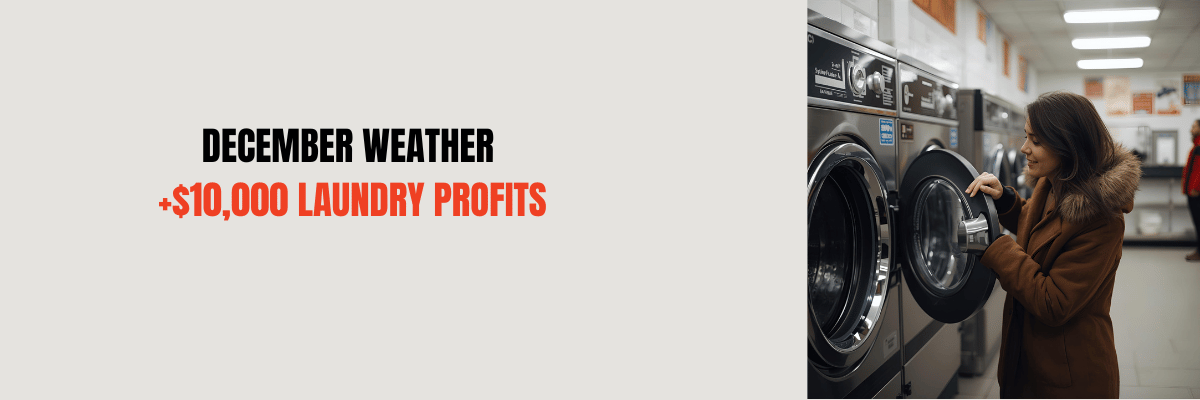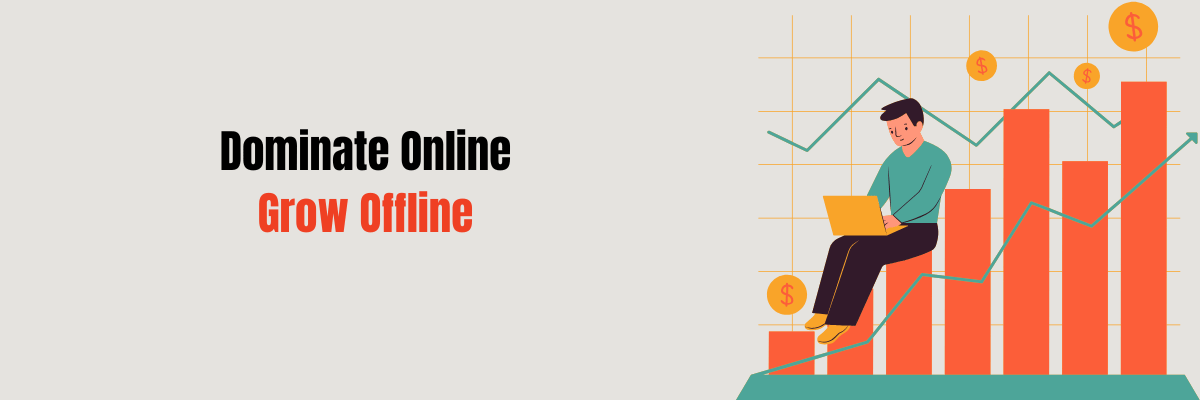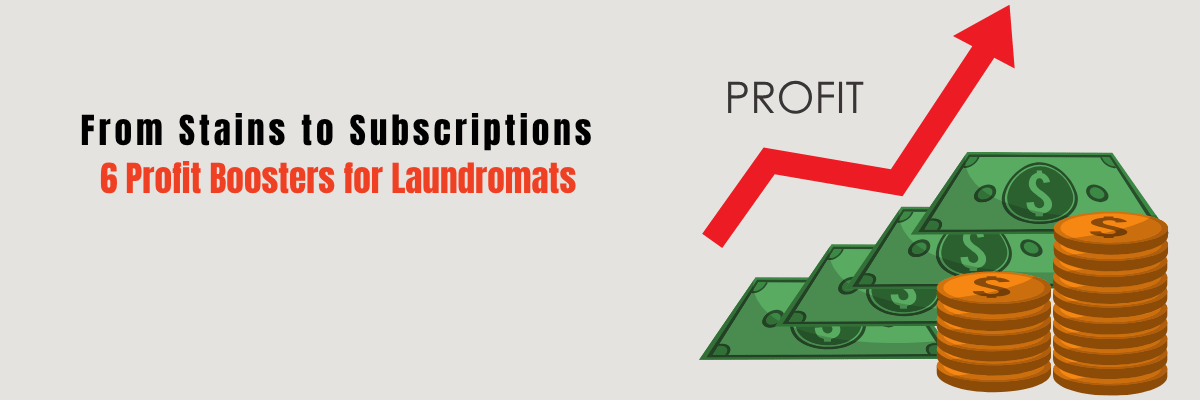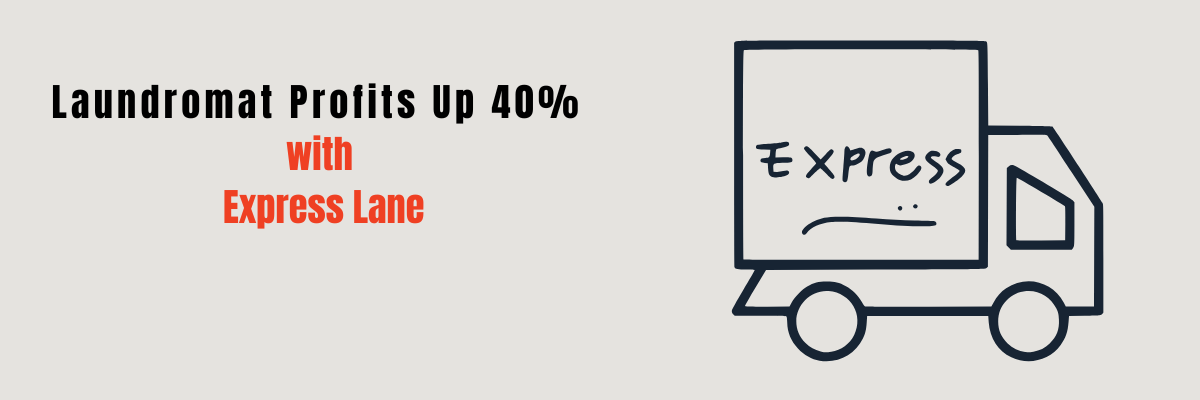Key Statistics Every Laundromat Owner Should Know Before Starting or Investing


The laundromat business is a thriving industry worldwide, not just in the U.S. For those considering opening a laundromat or investing in the laundry industry globally, it's essential to understand the facts, figures, and trends that influence this business. Below is a detailed guide to help laundromat owners and investors from around the world make informed decisions.
Crucial Stats Every Laundromat Owner Must Know Before Starting or Investing
1- Demographics and Laundromat Industry: Global Industry Overview
Number of Laundromats
a) United States: Approximately 35,000 laundromats.
b) Europe: Around 15,000 laundromats spread across countries like Germany, the UK, France, and Spain.
c) Asia: In countries like Japan, China, and South Korea, laundromat businesses are booming with over 50,000 facilities, with a rapidly growing market.
d) Australia: Australia houses around 5,000 laundromats.
e) Latin America: Countries like Brazil, Mexico, and Argentina have a rising number of laundromats, with over 7,000 collectively.

Market Size
a) Global market size for the laundromat industry is valued at around $48 billion, with significant growth in regions like Asia-Pacific and Latin America.
Revenue per Laundromat
a) Average laundromat revenues globally range between $50,000 to $400,000 annually, with variations based on location and service offerings. In the U.S. and Europe, this is typically around $200,000 to $500,000, while in developing countries, it may range from $50,000 to $200,000.
Profit Margin
a) Global profit margins for laundromats are usually between 10-35%, depending on operating costs, with countries like Australia, the U.K., and Japan seeing higher margins due to premium pricing and urban demand.
Cash Flow
a) In urban centers across North America, Europe, and Asia, laundromats can generate $50,000 to $200,000 in annual cash flow due to constant customer demand.
Success Rate/Return on Investment (ROI)
a) The ROI for laundromats globally ranges between 15-35%, depending on country-specific factors like labor costs and service diversity.
2- Demographics and Laundromat Industry: Insights on Survival Rates and Profitability
Survival Rate
a) 85-95% of laundromats globally survive beyond the first five years. Countries like Japan, Germany, and Canada, where the demographics and laundromat industry benefit from technological integration and stable economies, report even higher survival rates.
Profitability
a) Globally, laundromats typically break even within 2 to 3 years, with regions like Australia and Japan seeing quicker ROI due to higher service charges.
3- An Average Laundromat Business Across Different Demographics and the Laundromat Industry
Facility Size
Facility sizes can vary worldwide:
a) U.S. and Canada: 1,500 to 4,000 square feet.
b) Europe: Generally smaller, between 1,000 to 2,500 square feet.
c) Asia (e.g., Japan, South Korea): Facilities range between 500 to 1,500 square feet due to space constraints in urban areas.
Operating Hours
a) U.S. and Europe: Laundromats generally operate 12-18 hours daily.
b) Asia and Australia: Many laundromats operate 24/7 to cater to high urban population densities and service demand.
Number of Employees
a) Globally, laundromats tend to employ between 1-5 staff members, with labor costs significantly affecting profitability in countries like Germany, France, and Japan, where wages are higher.
Chains/Franchises
a) 15-25% of laundromats globally are part of chains or franchises. Countries like Australia, Germany, China, and USA see a higher share of franchised laundromats, providing brand recognition and centralized support.
Start-Up Costs
Startup costs range widely:
a) U.S.: $200,000 to $500,000.
b) Australia: Around AU$300,000.
c) Japan and South Korea: Approximately $150,000 to $350,000.
d) Europe: €100,000 to €400,000 depending on location.
e) In developing countries, these costs may be lower, ranging from $50,000 to $150,000.
Commercial Equipment
a) Equipment costs are generally similar across the globe. Commercial-grade washers and dryers cost between $1,000 to $10,000 per unit, with countries like Germany and Japan favoring high-tech, energy-efficient machines.
4- Customer Demographics
Typical User
a) Globally, most laundromat customers live in urban areas, with 70-80% residing in rented homes.
Gender
a) Laundromat users are predominantly female, with global averages showing 55-60% of users being women.
Proximity
a) 60-70% of laundromat users live within a 1-2 km radius, emphasizing the importance of selecting a strategic location.
Household Income
a) The global average for household income of laundromat users ranges from $15,000 to $50,000 annually, with countries like the U.S., Australia, and the UK on the higher end of that spectrum.
Repeat Customers
a) Around 75-90% of laundromat customers return weekly, particularly in densely populated countries like Japan, China, and the UK.
5- Industry Variability
Impact of Location, Size, and Services Offered
a) In countries like Japan, China, and Germany, location is the single biggest factor in laundromat success, with urban centers drawing more customers. Service diversification, including wash-and-fold, dry cleaning, and delivery services, can increase revenue by 20-50% in markets like Australia and South Korea.
6- Additional Key Metrics to Consider
Utility Costs
a) Global utility costs take up about 20-30% of a laundromat's revenue. In countries like Australia and Germany, energy-efficient equipment is vital due to higher utility prices.
Maintenance & Repair Costs
a) Maintenance and repairs typically consume 10-15% of annual revenue worldwide, with countries like Japan and Germany having higher costs due to the prevalence of high-tech machines.
Rent/Lease Costs
Lease costs vary greatly:
a) U.S.: 5-10% of revenue.
b) Australia and Europe: Rent is higher, taking 10-20% of gross revenue.
c) In developing markets like Latin America, rent is typically lower, around 5-7%.
Labor Costs
Labor costs vary significantly by country:
a) U.S. and Australia: Labor costs take up 10-20% of revenue.
b) Europe: Higher at 20-25%, particularly in Germany and France, where wages are higher.
Licensing and Permits
Costs for licensing and permits range from:
a) $500 to $2,500 in most countries, depending on local regulations.
Marketing and Customer Acquisition Costs
a) 3-6% of revenue is spent on marketing, with higher percentages in highly competitive markets like South Korea and Australia.
Environmental Regulations
a) In regions like Europe and Australia, environmental regulations can affect operations, requiring energy-efficient equipment. Compliance costs can reduce utility bills by 20-30%.
Competition Analysis
a) Globally, competition is a crucial factor to consider. Countries like Japan, South Korea, and Germany have dense laundromat markets, making it vital to study local competitors.
Service Diversification
a) Offering additional services like wash-and-fold and delivery can boost revenue by 20-40%, particularly in markets like the U.K., Japan, and Australia, where time-poor customers seek convenience.
Risk Management
a) Insurance costs range from $1,500 to $4,000 annually, covering property damage, theft, and liability.
Technological Integration
a) Digital payment systems and mobile apps can increase customer retention by 10-20%, especially in tech-forward markets like Japan, South Korea, and Germany.
Energy-Efficient Equipment
a) Investing in energy-efficient washers and dryers can reduce utility costs by 15-30% annually, particularly in countries with high energy prices like Germany and Australia.
Loyalty Programs & Customer Retention
a) Loyalty programs can increase repeat customer rates by 10-20%, especially in competitive markets like Australia and South Korea.
Seasonal Demand Fluctuations
a) Laundromats in countries with distinct seasons, such as Canada, Australia, and Europe, experience 5-10% revenue drops during summer but increased traffic during colder months.
Key Takeaways for Aspiring Laundromat Owners and Investors
Starting or investing in a laundromat business in 2025 presents both opportunities and challenges, with global trends influencing profitability and operations. Success in this industry requires a deep understanding of key factors, including business models, legal requirements, location, and customer demographics. In the Demographics and Laundromat Industry, proper financial planning, investing in energy-efficient equipment, embracing technological advancements like digital payments, and diversifying services are essential for success. By staying informed about local and global trends, and tailoring offerings to meet customer demand, you can build a profitable and sustainable laundry business in any region.
FAQs for Laundromat Owners and Investors in the Global Demographics and Industry
Question- What is the average start-up cost for a laundromat globally?
Answer- The average start-up cost ranges from $50,000 to $500,000 globally, depending on the location, facility size, and the type of equipment you choose. Costs tend to be higher in developed regions like the U.S., Europe, and Australia and lower in developing countries.
Question- How much can a laundromat make in revenue annually?
Answer- On average, laundromats worldwide generate between $50,000 to $500,000 annually, depending on location, services offered, and customer base. Laundromats in highly populated urban centers often see higher revenues.
Question- What is the typical profit margin for a laundromat?
Answer- The profit margin typically ranges from 10% to 35%. Regions with higher utility costs or labor expenses, such as Germany, Australia, and Japan, may experience lower margins unless they invest in energy-efficient technology or automation.
Question- How important is location for a laundromat's success?
Answer- Location is critical to a laundromat's success. In urban areas, 60-70% of customers live within a 1-2 km radius, so it's essential to place the laundromat in a densely populated, accessible location. Consider proximity to apartment complexes, student housing, and commercial districts.
Question- How much do laundromat utilities cost?
Answer- Utilities typically consume 20-30% of a laundromat's revenue globally, with regions like Australia and Europe facing higher costs due to more expensive water and electricity.
Question- What types of services can increase laundromat profitability?
Answer- Offering additional services such as wash-and-fold, dry cleaning, pickup and delivery, and vending machines can boost revenue by 20-40%. In competitive markets like Japan and Australia, these services can make a significant difference.
Question- How much do commercial washers and dryers cost?
Answer- Commercial-grade equipment costs range from $1,000 to $10,000 per machine. In countries like Germany and Japan, investing in energy-efficient machines is essential due to stricter environmental regulations and higher energy costs.
Question- How long does it take to break even on a laundromat investment?
Answer- Globally, laundromats typically break even within 18 months to 3 years, depending on the country and the initial start-up costs. Locations in high-traffic urban areas may break even faster due to consistent customer demand.
Question- What are the common challenges in running a laundromat?
Answer- Common challenges include managing high utility costs, equipment maintenance, handling customer service, and staying competitive in oversaturated markets. In some countries, complying with local environmental and business regulations can also be a challenge.
Question- What kind of customer demographic typically uses laundromats?
Answer- Laundromat customers are generally renters, urban dwellers, or individuals without in-home laundry access. Income levels vary, with most customers earning between $15,000 and $50,000 annually. In regions like Asia and Europe, time-strapped professionals also rely on laundromat services like wash-and-fold or delivery.
Question- How do loyalty programs help laundromats?
Answer- Loyalty programs can increase repeat customer rates by 10-20%, offering incentives like free washes after a certain number of visits. They’re particularly effective in competitive markets like Australia, South Korea, and the UK.
Question- What factors affect seasonal demand in laundromats?
Answer- In countries with colder climates like Canada, Europe, and Australia, laundromats typically see increased traffic during the winter months. Conversely, traffic may dip by 5-10% during the summer.
Question- Are there laundromat franchises available globally?
Answer- Yes, 15-25% of laundromats globally are part of chains or franchises. Countries like Australia, Germany, and China have prominent laundromat franchise opportunities that provide operational support, branding, and customer trust.
Question- How important is technology integration for laundromats?
Answer- Very important. Digital payment systems, mobile apps, and smart laundromats are growing trends worldwide, particularly in Japan, South Korea, and Germany. These technologies can increase revenue by 15-20% and improve the customer experience.
Question- What kind of insurance does a laundromat need?
Answer- Laundromat owners should invest in property, liability, and workers' compensation insurance. Global costs for laundromat insurance range from $1,500 to $5,000 annually, depending on location and coverage.
Question- Are energy-efficient washers and dryers worth the investment?
Answer- Yes. Although more expensive initially, energy-efficient machines can reduce utility costs by 15-30% annually, which is particularly valuable in countries with high utility rates like Australia and Germany.
Question- How can I make my laundromat stand out from the competition?
Answer- To stand out, offer additional services like wash-and-fold, provide a clean and safe environment, integrate advanced payment systems, and implement customer loyalty programs. Diversifying your service offering can boost your revenue and customer retention.






